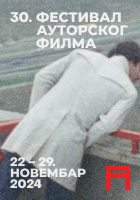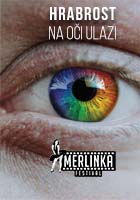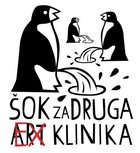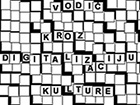
ZORAN POPOVIC, FROM THE TRAUMA OF COLLECTIVISM TO THE HAPPY SELF
Bojana Pejic, Moment, issue # 15, Magazine for visual media, Belgrade, 1989
Zoran Popovic is either unwilling or unable to resign himself to the notion that, as a privileged person, the artist‘s mission is to preserve the aura of the art work. This approach, which I would like to describe as the desire for extended presence, has been formulated in a text by Dragica Vukadinovic as the “Slavonic desire for the ‘final’ reconciliation of art and life”.
The strategies pursued by Popovic in his desire for reconciliation are not direct, but take circuitous and meandering paths. Together with numerous other artists of his radical generation, during the 70s Popovic actively participated in the endeavour to “carry art into society" – a project which John Falls described as “confusing progress with happiness“. The transition from the modern “dictatorship“ to post-modern humanity, in which the object is indifferent to the subject, was experienced by Popovic as his own, personal (artistic) crisis, primarily because the 80s had lent polycentric art a certain legitimacy. The path embarked upon by this artist stretched (or as Vatimo puts it “branched out”) from Wittgenstein to Barthes, from the trauma of collectivism to the (happy) self, from the “hard subject“, (“Struggle in New York-Borba u Njujorku“, 1976) to the “soft subject“ (“Pleasure in Drawings“, 1979).
Whereas nowadays numerous contemporary artists who have a “conceptual past” fashion (over) large and (over) materialized objects, Popovic is moving towards immaterialization. His drawings, entitled Satisfaction in Drawings, which depict erotic views and people, are characterized by sensual, soft strokes and lines which conceal rather than reveal the representation, lifting the figures and scenes from the surface instead of melting them into it. As such, Popovic‘s drawings are comparable to the conciseness of a Matisse or the audacity of Picabia, Cocteau or Duchamp. These early drawings bear some resemblance to the works in Popovic‘s Pleasure Garden (1989): Drawings, which – similar to cartoons – are applied with pen and ink onto a parchment surface. Here the images have become “strictly controlled concepts” which, in the words of the artists himself, emerge or disappear, congregate or separate under a process involving a “montage of attractions“, and they relate a story from the fragments. The depicted images originate from a collective European memory of art, from which they leap up like flashes of lightning – similar to slides (Axioms, 1972, Typomachinist Miodrag Popovic: of life, of work and of leisure, 1977 or Erotic Drawings, 1980-1987) or movie pictures (Pretty Good, 1973 or I Never Promised You an Avant-Garden, 1980). The scenes containing erotic or fabulous creatures, which seem to derive from a (cartoon-like) Cythera or a (filmed) Arcadia, are both an entire image and fragments of drawings. The work becomes irreal at precisely the moment in which the basic condition for seeing is fulfilled: light (screen or projector light). Any image which is reliant upon light for its effect (in the past glass paintings, today movie pictures or slides) necessarily assumes the properties of a membrane: It becomes a boundary or an interface between reality and the immateriality.
Belgrade 1989
English: John Rayner
Moment, issue # 15, Magazine for visual media, Belgrade, July - September, 1989;
Section ‘Conceptual art in Belgrade’,
Bojana Pejic, Actual: Old-timers (under this title, Bojana Pejic wrote specific texts for each member of the informal group of six artists: Marina Abramovic, Era Milivojevic, Nesa Paripovic, Zoran Popovic, Rasa Todosijevic i Gera Urkom)














